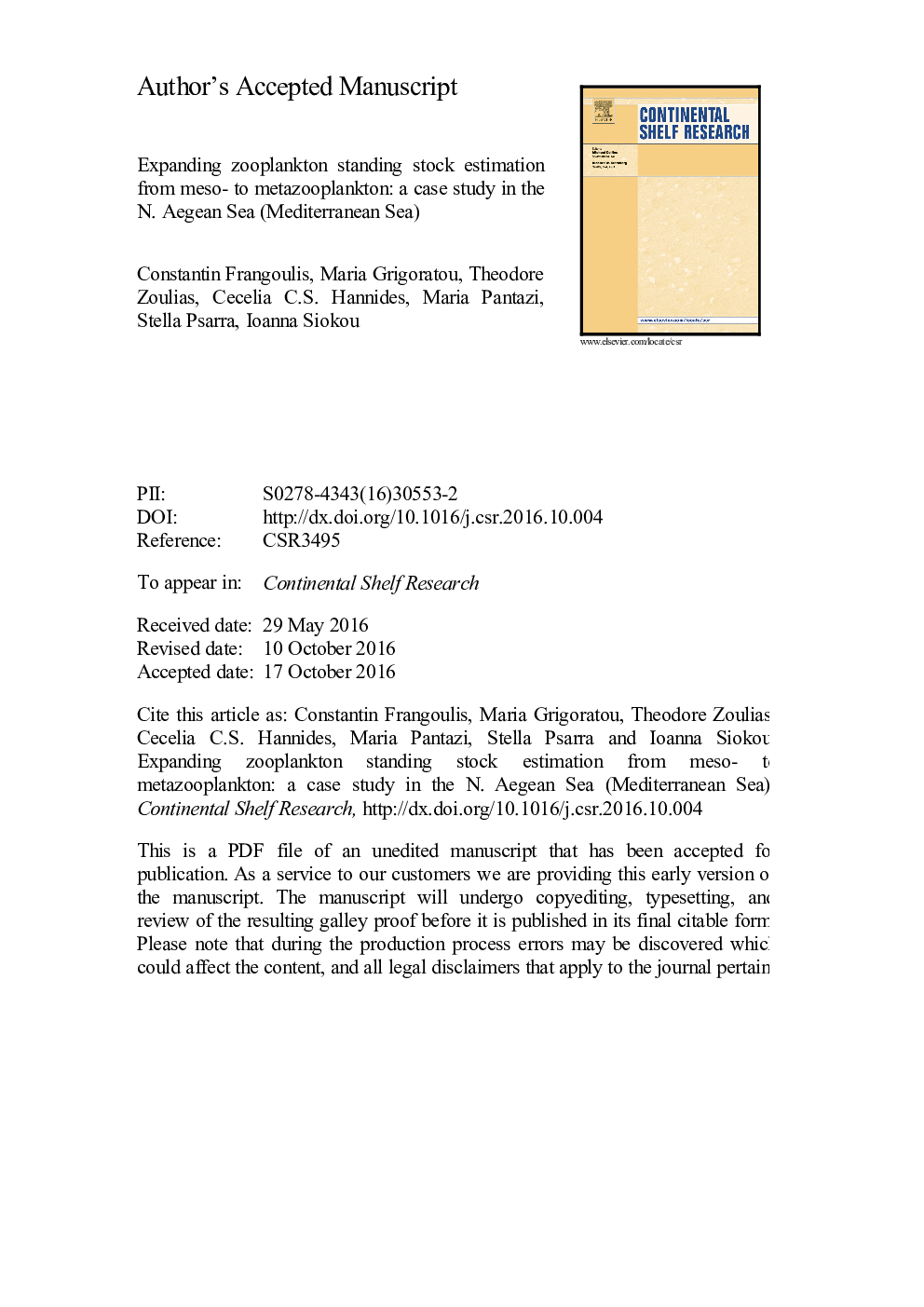| Article ID | Journal | Published Year | Pages | File Type |
|---|---|---|---|---|
| 8884175 | Continental Shelf Research | 2017 | 38 Pages |
Abstract
Although metazooplankton includes a wide size range of organisms, our knowledge is essentially based on mesozooplankton. A first estimation of the metazooplankton standing stock in a Mediterranean area, and of its size fractions and functional groups are provided by combining data out of three nets with different mesh sizes (45, 200 and 500 µm). Data were collected along a gradient of oligotrophy in the frontal area created, where the waters of Black Sea origin meet those of Levantine Sea origin (Northeast Aegean Sea, Eastern Mediterranean). Metazooplankton biomass was dominated by mesozooplankton (0.2-2 mm), while meso- and microzooplankton (<0.2 mm) shared dominance of abundance. Copepods dominated both in abundance and biomass and were followed by nauplii in abundance and gelatinous carnivores or decapod-euphausiid larvae in biomass. The spatiotemporal variability of metazoans stock, biomass-size spectra linearity, carnivorous group contribution and copepod diversity, supported that metazooplankton tends to recede from steady-state when approaching less oligotrophic dynamic areas (such as fronts) or dynamic periods (such as the spring bloom). The need and the difficulties of obtaining a larger picture from a wider size range of metazoans for understanding the role of zooplankton are stressed.
Related Topics
Physical Sciences and Engineering
Earth and Planetary Sciences
Geology
Authors
Constantin Frangoulis, Maria Grigoratou, Theodore Zoulias, Cecelia C.S. Hannides, Maria Pantazi, Stella Psarra, Ioanna Siokou,
